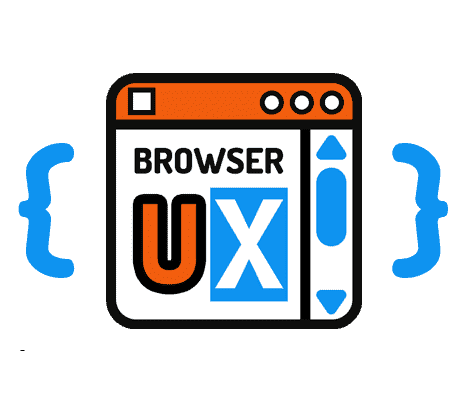About browserux.css

browserux.css is a modern alternative to traditional CSS resets and normalize.css. It addresses the current needs of the web by putting accessibility, visual consistency, and user experience at the center of its priorities.
Designed as a pragmatic CSS foundation, browserux.css doesn't just normalize default browser styles, it improves them intelligently. It harmonizes behaviors, respects user preferences, and provides a solid base for building accessible, visually consistent, and modern web interfaces, without adding unnecessary overhead.
I. Why browserux.css?
In most web projects, we start by including a file like normalize.css or a reset, then gradually pile on various CSS tweaks: selectors to improve form rendering, fixes for text selection, media queries for user preferences, and so on. These additions are often gathered from various sources, with little structure or consistency.
browserux.css was born from that reality: instead of reinventing the wheel for every project or copy-pasting scattered code snippets, it offers a unified, modern CSS baseline tailored to the real needs of today’s web. It consolidates, organizes, and updates best practices into a single, ready-to-use file.
II. Goals
- Ensure consistent appearance across browsers, without arbitrarily wiping out useful default styles.
- Respect user preferences through modern media queries like
prefers-reduced-motion,prefers-color-scheme, andprefers-contrast. - Improve accessibility by supporting keyboard navigation and assistive technologies
(e.g.,
:focus-visible, enhanced contrast). - Provide native elements (forms, scrollbars, placeholders) with a clean, coherent, and usable visual baseline.
- Offer a better default UX, even before adding any JavaScript.
- And yes, a few reset rules, because let’s be honest: we always end up adding some, so we might as well do it properly from the start.
III. Key Features
1. Centralized CSS Variables
One of the pillars of browserux.css is its structured use of CSS variables. These allow for centralized control of key visual properties, colors, typography, spacing, effects, and make customization easy without having to dig through the entire file.
With these variables, it’s simple to switch between light and dark themes, adjust accent colors, or change
the global font, all by editing just a few lines in :root.
:root {
--ui-page-bg: #eaeaea;
--ui-page-color: #121212;
}Beyond improving maintainability, this approach encourages more consistent design systems, even for small or medium-sized projects.
2. Respect for User Preferences
browserux.css automatically detects whether a user prefers a light or dark theme and applies the appropriate color palette using CSS variables. This ensures your UI remains aligned with the user’s system-level settings.
@media (prefers-color-scheme: dark) {
:root {
--ui-page-bg: #121212;
--ui-page-color: #eaeaea;
}
}
Additional media queries detect user preferences for reduced motion (prefers-reduced-motion),
enhanced contrast (prefers-contrast), and other accessibility settings. This allows browserux.css
to provide a user experience that adapts intelligently:
- Reduced or disabled animations to help prevent motion sickness.
- Improved readability in high contrast environments.
- Smooth scrolling, unless the user explicitly prefers instant scroll behavior.
3. Thoughtfully Styled Native Elements
Native elements like forms, scrollbars, placeholders, progress bars, and even text selection are often overlooked by traditional CSS resets. As a result, their appearance can vary greatly between browsers, undermining visual consistency and user experience.
- Valid or invalid fields are visually distinguished with subtle background and border changes, clear without being overwhelming.
- Scrollbars are styled in a clean, consistent way, compatible with both WebKit and Firefox.
- Placeholders remain readable, with colors that adapt to the field’s state (especially in error cases).
- Interactive elements like sliders,
details/summary, andprogressbehave consistently across browsers. - Text selection is customized to match the overall theme, with color values defined via CSS variables, including for dark mode and high contrast settings.
input:valid,
textarea:valid,
select:valid {
background-color: var(--ui-valid-bg-color);
border-color: var(--ui-valid-border-color);
}The goal isn’t to reinvent these elements entirely, but to give them a coherent, accessible, and ready-to-use presentation, without having to restyle everything from scratch.
4. A Hybrid Foundation: Reset, Normalization, Accessibility, and Usability
Beyond variables, user preferences, and interface components, the rest of browserux.css serves as a hybrid foundation, carefully balancing reset logic, normalization, accessibility, and usability.
It includes the usual reset essentials: margins and paddings set to zero, global box-sizing: border-box,
and cleaned-up default styles for forms and tables. But every rule is applied with intent,
considering modern standards, real-world use cases, and the practical needs of end users.
*,
::before,
::after {
box-sizing: inherit;
}
html {
box-sizing: border-box;
}
Rather than erasing everything blindly, browserux.css keeps what’s useful, fixes what’s problematic,
and improves what can be made better. It’s a thoughtful kind of normalization, neither too strict nor too lenient,
with special care given to default behaviors (like touch-action, user-select, tab-size,
and detailed treatment of typographic elements like sub, sup, abbr, code, etc.).
In short, it’s the kind of CSS foundation we all end up piecing together manually, but this time, it’s well-structured, documented, and ready to go.
IV. A Readable, Well-Documented File
In the spirit of normalize.css, browserux.css places a strong emphasis on code readability and integrated documentation. Every block of rules is clearly scoped, commented, and contextualized, so you always understand why a rule exists, what it fixes or improves, and in which situations it applies.
Whether it’s the purpose of a conditional scrollbar-color, the use of
text-decoration-skip-ink, or the rationale behind -webkit-tap-highlight-color: transparent,
everything is explained directly in the file, line by line.
/**
* Applies standard scrollbar styling only in Firefox, allowing more advanced
* customization with WebKit pseudo-elements in other modern browsers (Chrome, Safari, Edge).
* Without this block, `::-webkit-scrollbar` rules will be ignored in
* Chrome > 120, Edge > 120, and Safari > 18.1, because `scrollbar-color`
* overrides them if present globally.
*/
@supports (-moz-appearance: none) {
html {
scrollbar-color: var(--ui-scrollbar-thumb) var(--ui-scrollbar-track);
scrollbar-width: auto;
}
}This attention to inline documentation is not just cosmetic, it helps foster understanding, adoption, and customization of the file. Rather than being a black box, browserux.css invites developers, beginners and experts alike, to read it, adapt it, and build on top of it with confidence.
V. In Conclusion
browserux.css stands apart from traditional CSS resets or even normalize.css, both in scope and philosophy. It offers a more modern, accessible, and UX-oriented approach, incorporating practical patterns that are often missing from baseline stylesheets. It’s worth trying if you’re looking for a solid, well-documented foundation tailored to the realities of today’s web.
The project is open and collaborative, hosted on GitHub. Anyone is welcome to report issues, suggest improvements, or follow its evolution. The full change history is available, and every update comes with clear context and reasoning, via commit messages or issue discussions.
A useful, transparent, and evolving tool, built to be used, understood, and improved.

browserux.css is a base CSS file designed as a modern alternative to classic resets and Normalize.css, focused on user experience and accessibility. It lays accessible, consistent foundations adapted to today's web usage: browserux.css
About
This blog was designed as a natural extension of the BrowserUX ecosystem projects.
Its goal is to provide complementary resources, focused tips, and detailed explanations around the technical choices, best practices, and accessibility principles that structure these tools.
Each article or tip sheds light on a specific aspect of modern front-end (CSS, accessibility, UX, performance…), with a clear intention: to explain the “why” behind each rule to encourage more thoughtful and sustainable integration in your projects.

